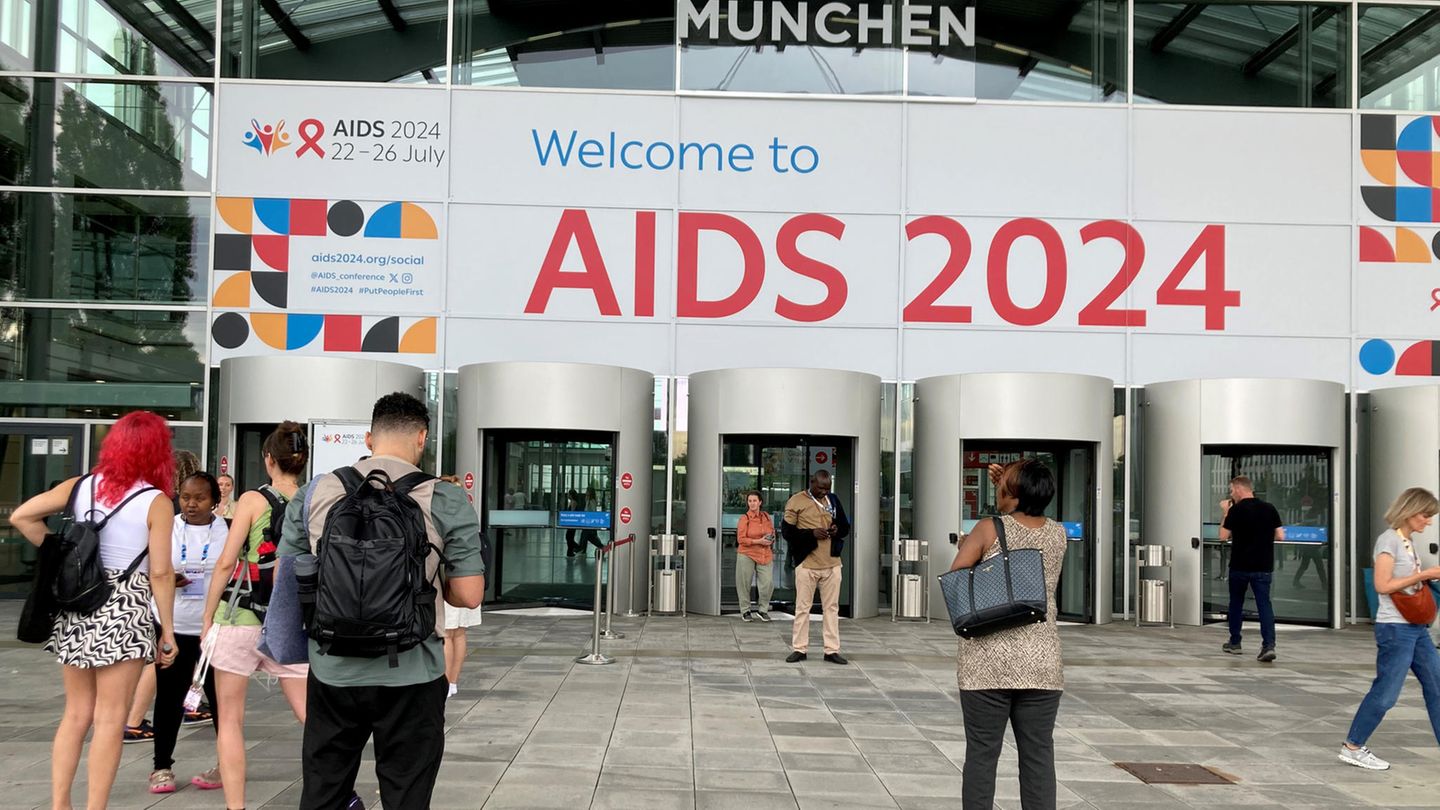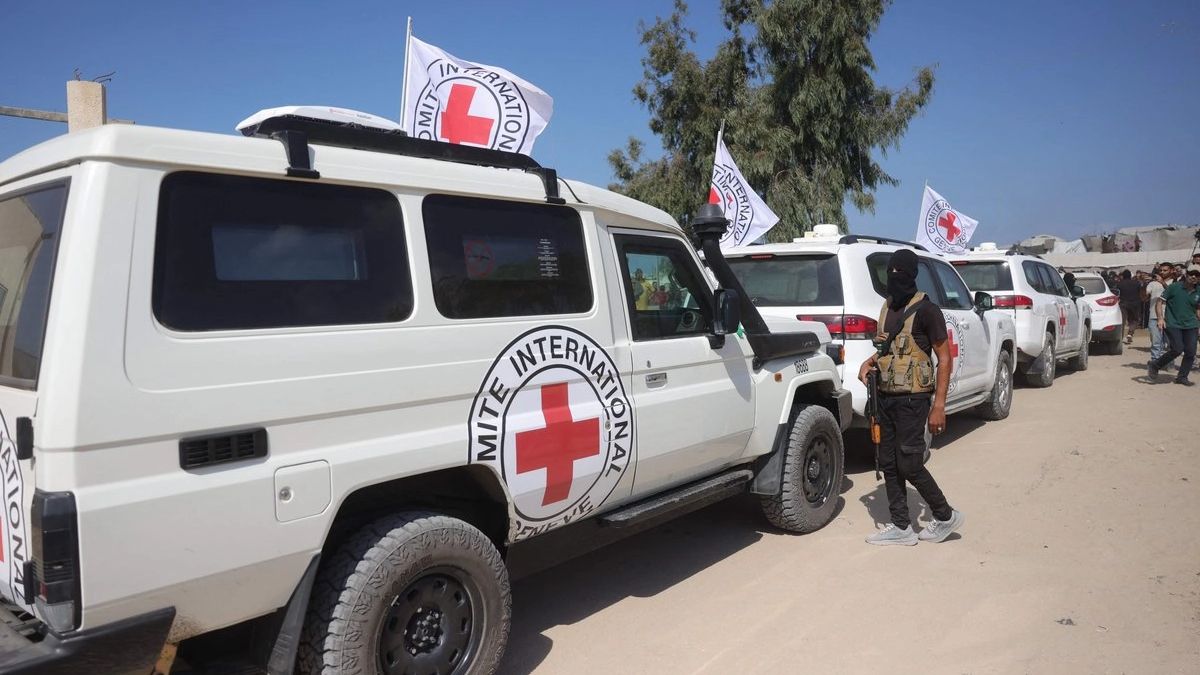Can AIDS be overcome? The United Nations Programme against AIDS (UNAIDS) warns that financial cuts and other factors are jeopardising progress.
Despite great successes in the fight against AIDS, the United Nations is still a long way from its goal of largely defeating the immune deficiency disease by 2030. “The path to ending AIDS is no secret. It is a political and financial decision,” stressed the UN program for combating AIDS, UNAIDS, when publishing its new report. One person still dies every minute from the consequences of AIDS.
If those responsible now increase funding and, among other things, protect the rights of particularly affected groups, the UN target for 2030 can still be achieved. These groups include men who have sex with men, transgender people, sex workers and people who inject drugs.
However, financial cuts, discrimination and increasing curtailment of human rights are jeopardizing the progress made so far, warned UNAIDS at the start of the World AIDS Conference in Munich. Successes in the fight against AIDS have been achieved particularly in sub-Saharan Africa, although the numbers there remain high. However, infections are increasing particularly in the Eastern Europe and Central Asia region.
Far from intermediate goal
According to the report, around 1.3 million people were newly infected with the virus last year. The interim goal was to reduce the number of new infections per year to less than 370,000 by 2025 – but in 2023 the number would still be 3.5 times higher.
The number of deaths due to AIDS was only half as high as in 2010, at 630,000. However, the world is not on track to achieve the interim goal for 2025 of reducing AIDS-related deaths to below 250,000.
Even though the number of people receiving antiviral treatment has increased, almost one in four people affected still does not have access to life-saving medication – which also prevents the virus from spreading further. Children are particularly disadvantaged: 77 percent of those infected aged 15 and over have access, while only 57 percent of children up to 14 years have access.
The UN aims to reduce new infections and AIDS-related deaths by more than 90 percent between 2010 and 2030. According to UNAIDS, the decisions that heads of state and government make this year will determine whether this goal is achieved and whether AIDS will no longer be considered a threat to public health by 2030.
Saving millions of lives
“Heads of state and government can save millions of lives, prevent millions of new HIV infections and ensure that all people living with HIV can live healthy, fulfilling lives,” warned Winnie Byanyima, Executive Director of UNAIDS. It is important to have sufficient resources to fight HIV and to protect everyone’s human rights.
Medical breakthrough: First woman cured of HIV
00:44 min
According to the report, the number of people living with HIV who require lifelong treatment could stabilize at around 29 million by 2050 if politicians take the necessary measures now. Failure to combat AIDS appropriately will result in significantly higher costs. According to a study, the number of people requiring lifelong support could then rise to 46 million. In 2023, the number was 39.9 million.
Success in southern Africa, concern about Eastern Europe
According to UNAIDS, new HIV infections have fallen by 39 percent worldwide since 2010, and by as much as 59 percent in eastern and southern Africa. However, the number of new infections has increased in three regions of the world: Latin America and the Middle East and North Africa, but above all in the Eastern Europe and Central Asia region. In the latter, the fight against HIV appears to have gotten dangerously off track due to political and financial challenges.
In 2023, 140,000 new infections were reported in the Eastern Europe and Central Asia region, a 20 percent increase compared to 2010. The vast majority of new HIV infections are concentrated in Russia, Ukraine, Uzbekistan and Kazakhstan. The region is also the only one in the world where the number of AIDS-related deaths has increased since 2010, by 34 percent to 44,000 deaths in 2023. Testing and treatment programs are not available to many people in the region – this is especially true for the most affected groups such as sex workers, men who have sex with men, transgender people and people who inject drugs.
Stigmatization of AIDS makes access to help difficult
The challenges in the Eastern Europe and Central Asia region are enormous, due to restrictive laws, stigma and inadequate expansion of HIV prevention measures for at-risk groups, UNAIDS reported.
Stigmatization and discrimination against these groups, among others, also made access to prevention and treatment more difficult elsewhere. These people and their sexual partners accounted for a higher proportion of new infections worldwide than in 2010. Back then, it was 45 percent, and in 2022 it was already around 55 percent. There was no figure for 2023.
The use of condoms remains the most effective and cost-effective method of HIV prevention, but experts say their use is becoming less and less. Access to infection prevention tools such as drug pre-exposure prophylaxis (PrEP) is low, except in wealthy countries.
Financial resources are lacking
According to UNAIDS, global funding for the fight against HIV in low- and middle-income countries is declining. In 2023, it fell by five percent compared to the previous year to 19.8 billion US dollars (18.2 billion euros). This was 9.5 billion less than the amount of 29.3 billion US dollars needed by 2025. Domestic funding, especially in poorer countries, is also being restricted by the debt crisis and fell by six percent from 2022 to 2023.
Sabine Dittmar, Parliamentary State Secretary in the Federal Ministry of Health, emphasized that her ministry would provide around 6.75 million euros for UNAIDS in 2024. She was pleased that these funds could be kept stable, she said in Munich when presenting the new figures. In addition, Germany will be contributing around 1.4 million euros to the Global Fund to Fight AIDS, Tuberculosis and Malaria between 2023 and 2025.
Source: Stern
I’m Caroline, a journalist and author for 24 Hours Worlds. I specialize in health-related news and stories, bringing real-world impact to readers across the globe. With my experience in journalism and writing in both print and online formats, I strive to provide reliable information that resonates with audiences from all walks of life.




